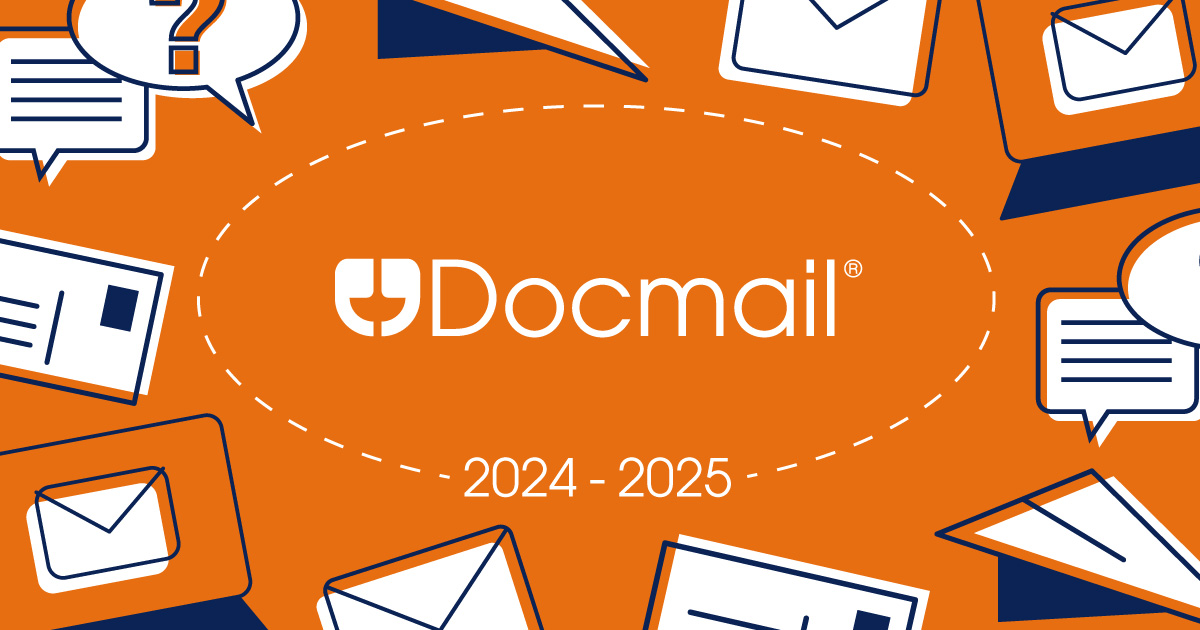Print and post continues to be vital channels in communication toolkits. By delivering clear, concise postal communications provides organisations with a means of driving engagement and informing their different end audiences. Traditionally, companies and organisations have had to rely on renting or buying their own franking machine to deliver this.
Whilst over the past 10 years we have seen a momentum shift towards the use of digital communications, post has remained a constant choice for delivering information. That said, as we approach 2024, the power of print or the power of the paper as Two Sides call it, has seen an acceleration in use due to the lack of trust and security often circulated around digital channels.
So, with print and post being vital for businesses, how are organisations creating and delivering these daily? Is there an easier, more cost-effective way than using a franking machine?
A franking machine is an office device, that applies a stamped mark to the envelope of a letter. The stamped mark acts as a reference or physical evidence to indicate that postage has been applied and paid for, so the item can be delivered.
The stamped mark is applied through a postage meter and can be identified as the 2D barcode on the envelope, where a stamp is traditionally placed.
Franking machines help organisations reduce costs on sending print and post, due to the Mailmark tariff code applied when used.
A franking machine allows businesses to take advantage of sending first and second-class mail, to their different end audiences without having to physically apply a traditional stamp to the envelope.
The franking machine can print stamp marks onto envelopes, labels and postcards and can even be used to print logos onto an envelope.
To utilise franking machines in your organisation you require the in-house resources needed to print a letter. This can include paper, ink, toner, and printing equipment as well as the envelope stock for the final output.
Once you have created and printed your letter, organisations are required to fold and enclose the letter into an envelope and use the franking machine to apply the stamp mark.
The franking machine applies the relevant postage price to the piece of mail, depending on its weight and size. Every item that is required to be sent, needs to be stamped through the franking machine. The funds to pay postage are generally paid for online via a secure portal or can be totalled on the machine and paid later, depending on your contract.
With print and post becoming more versatile, with different audiences requiring different content, at different times, in different outputs, organisations have been moving away from the use of franking machines.
Whilst franking machines are optimal for small volumes of mail output, the process and cost of running this equipment in-house can be huge, especially when the machine is used on an ad hoc basis or for large print runs. They have become no longer viable for organisations who are looking to streamline their communication processes, save money when posting on a large scale and make a real difference in the output they create.
Because of this shift since 2009 organisations such as the NHS, Local Government, the finance sector and SMEs have been using hybrid mail software in replacement of franking machines to streamline their print and mail processes.
Hybrid mail is the secure, online alternative to sending print and post through franking machines or using in-house processes.
It streamlines the whole process, by pulling upon the expertise of print experts through online automation. The process is simple to adopt, allowing you to send one or thousands of personalised communications in minutes all whilst helping you maximise your organisation outcomes.
Organisations simply upload their document, or choose one from their library and their address data file and the hybrid mail provider does the rest.
Hybrid mail helps save time and money, deliver the right communications at the right time and removes the requirement for in-house resources. It takes the whole process and consolidates it, even the cost of the delivery.
What’s more hybrid mail software can even integrate with your internal systems for further communication and data security.
If you’d like to learn more, you can read our blog What Is Hybrid Mail?
|
|
|
No requirement for in-house print resources |
Requirement for paper, ink, toner, envelopes and print equipment |
|
No contract fees or licenses |
Contract fees and year-on-year licenses |
|
Consolidated prices, including delivery |
Franking machine prices do not consider the costs of consumables to create the letter and staff time. Large upfront fee or ongoing monthly rental fee for hardware |
|
Create and send letters in minutes |
Time-consuming process |
|
Multiple user access for audit control and removal of time delays |
Singular access to use the franking machine |
|
Document control and audits |
No checks or audit control on items sent |
|
Removal of data security and protection errors |
Increased possibility of incorrect enclosures and data protection errors |
|
Frees up office space, with online secure access |
Franking machine sits behind your desk |
Hybrid services are used by thousands of organisations to send business communications. From business letters, newsletters, appointments, statements, marketing mailings, important information and updates, the service helps drive audience engagement and deliver real outcomes for business success. So why not join the thousands already benefitting?
You may still be using a franking machine in your organisation or are looking for a new supplier to help you deliver your important communications, then we are here to help. At CFH we were the first to market with hybrid mail and over 10 years later, still have the best solution available to help you manage and send your printed communications.
Find out more about our solution Docmail here or get in touch to find out how we can help you.

Structured Credit Communications For Leading Agri-Food Organisation
Surrey County Council Sought to Optimize Print/Post Services Across Departments. We Helped Transform Their Services With Our Industry Expertise.
The block management software providers at Blocks Online experienced considerable growth upon integrating a reliable mailing method and API connection.
Keen to adopt a more efficient way of printing, packing and posting their time-sensitive paper communications, High Mill has embraced the Docmail Print Driver.
Simplified Patient Communication For Lung Health Check Programme






Fife-based Electricity Asset Services, specializing in electrical and civil engineering, employs CFH's Docmail system for improved communication with Scottish Power and staff.















